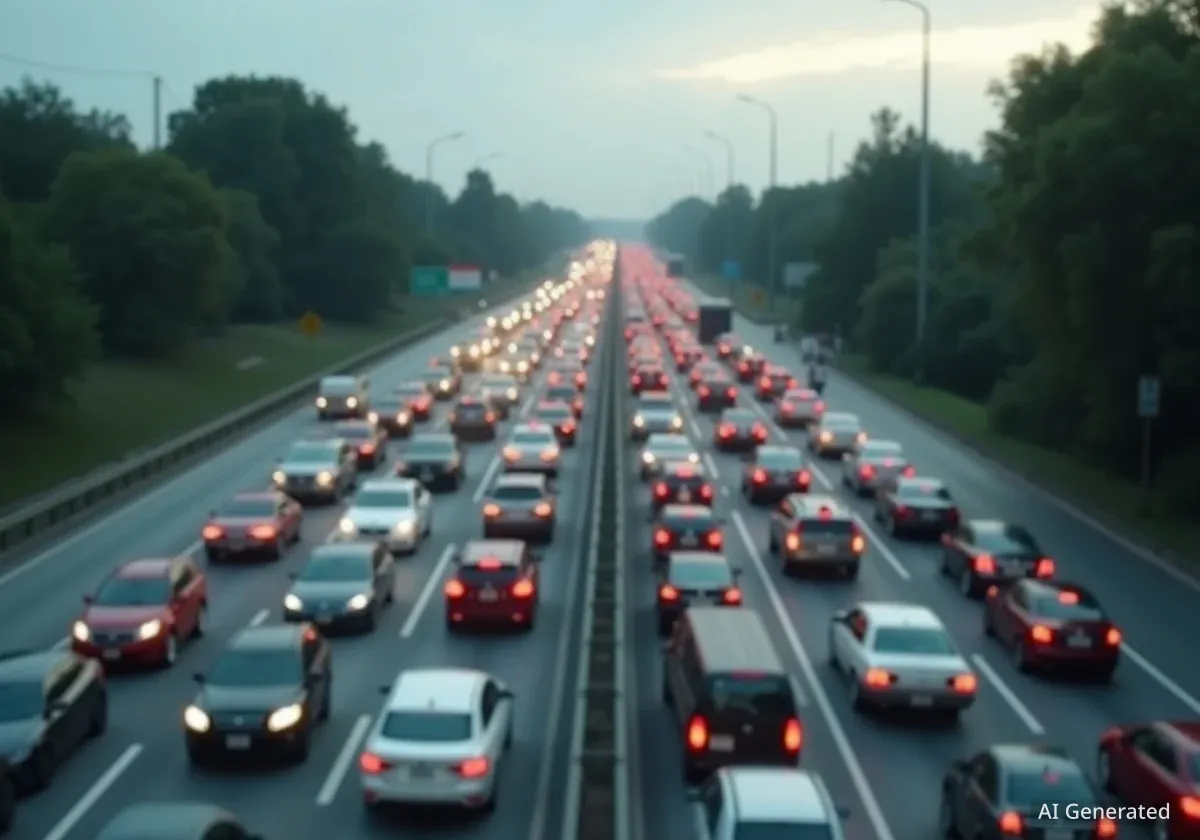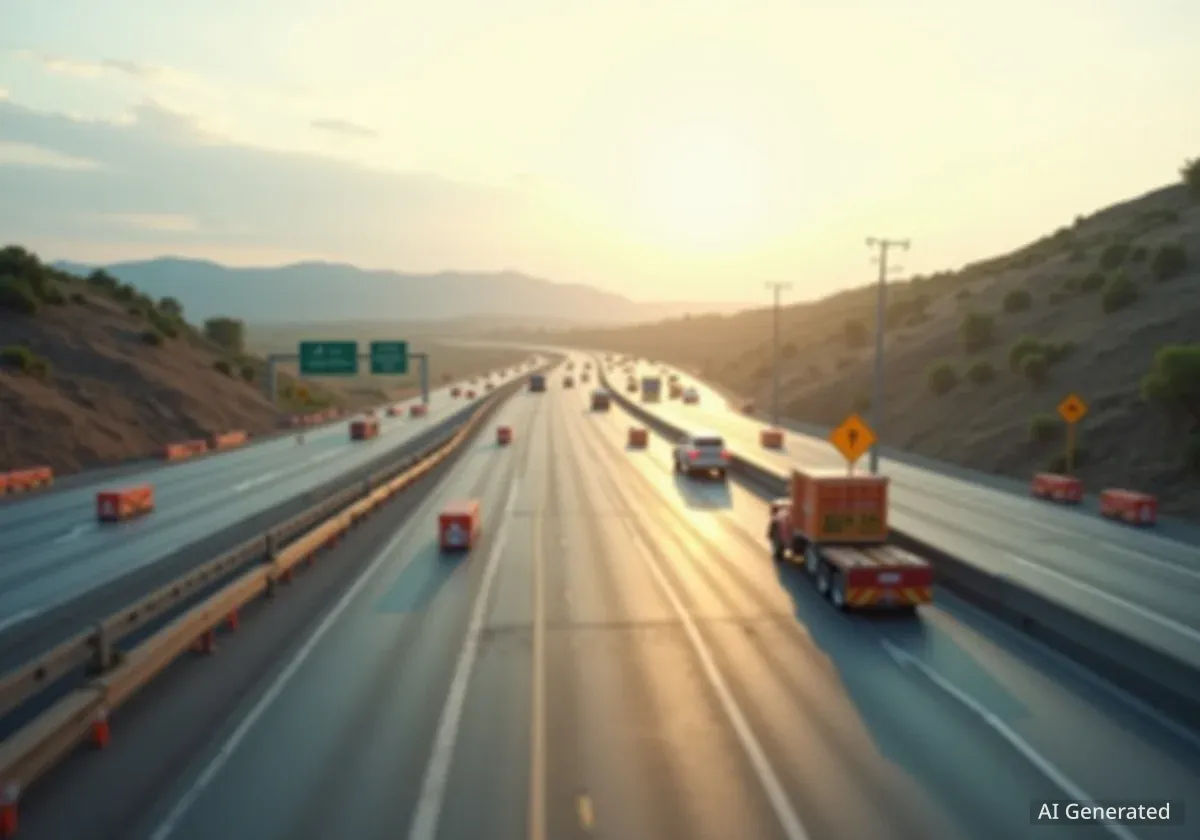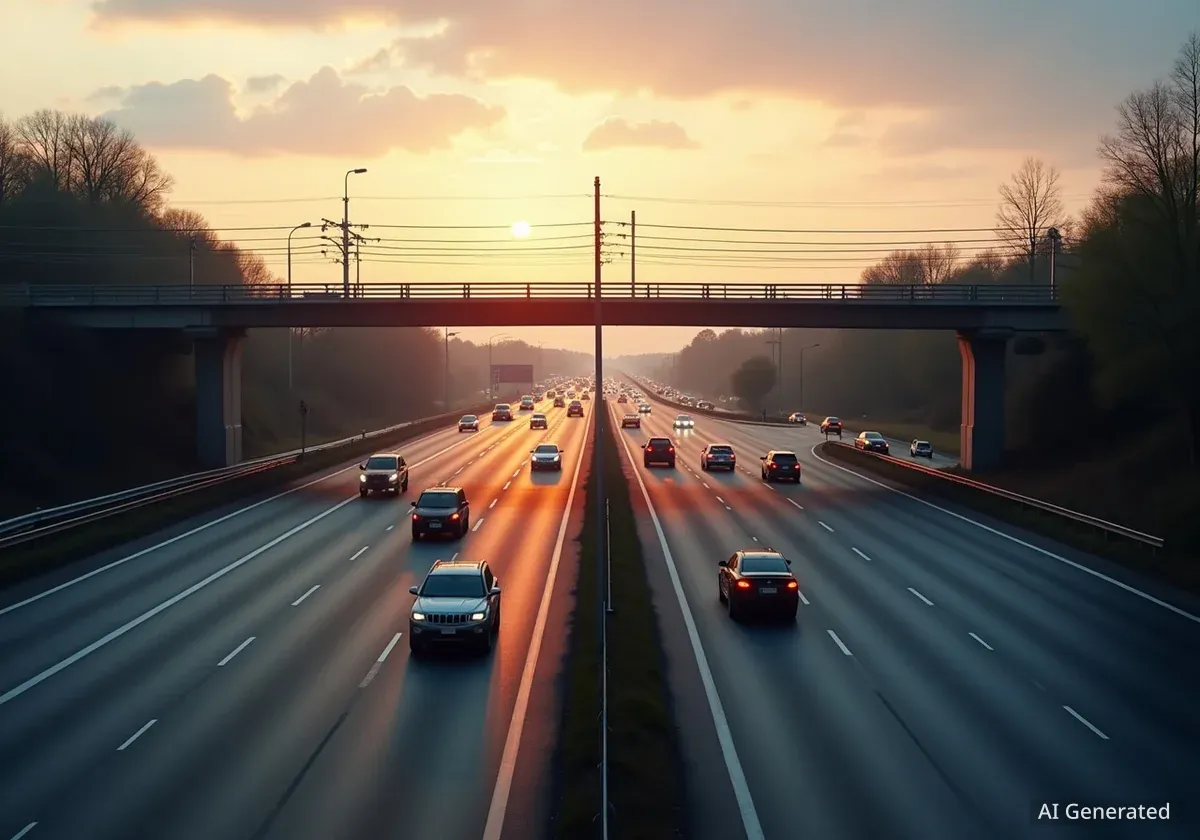Clarksville, TN – A traffic incident on the 101st Airborne Division Parkway caused significant delays for motorists on Tuesday afternoon, September 30, 2025. The disruption primarily affected westbound and eastbound lanes near a major intersection, leading to extensive backups during peak travel hours.
Emergency services responded to the scene of the wreck, which occurred at the intersection of 101st Airborne Division Parkway and Peachers Mill Road. The incident began around 4:10 p.m. local time, coinciding with the afternoon commute.
Key Takeaways
- A traffic wreck occurred on 101st Airborne Division Parkway in Clarksville.
- The incident happened at the intersection with Peachers Mill Road on Tuesday, September 30, 2025.
- Westbound traffic was affected from Peachers Mill Road to Whitfield Road.
- Eastbound traffic experienced backups from Peachers Mill Road past Fort Campbell Boulevard.
- Traffic flow began to normalize for eastbound lanes by 5:00 p.m., with westbound remaining slow.
Initial Traffic Impact and Response
The accident at the junction of 101st Airborne Division Parkway and Peachers Mill Road quickly created congestion. Westbound traffic was backed up for a considerable distance. Motorists reported slow movement stretching from Peachers Mill Road almost to Whitfield Road.
Simultaneously, eastbound lanes also experienced heavy delays. The backup for eastbound traffic extended from Peachers Mill Road past Fort Campbell Boulevard. This affected a large number of commuters traveling through the area.
Traffic Statistics
- The 101st Airborne Division Parkway is a major artery in Clarksville, connecting key areas.
- Traffic incidents during rush hour can increase commute times by an average of 30-60 minutes in urban areas.
- Approximately 50,000 vehicles use sections of the 101st Airborne Division Parkway daily.
Road Conditions and Recovery Efforts
By 5:00 p.m., approximately one hour after the incident began, traffic conditions started to improve. Eastbound lanes on the 101st Airborne Division Parkway returned to normal flow. This allowed many drivers to proceed with their commutes without further significant delays.
However, westbound traffic continued to move slowly. While the initial severe backup lessened, residual congestion remained. Drivers in the westbound direction were advised to continue exercising caution and expect longer travel times.
"Traffic incidents on major parkways like the 101st can have a ripple effect across the city's road network. Our priority is always to clear the scene safely and restore normal flow as quickly as possible," a local traffic official stated, speaking generally about such events.
Understanding Traffic Congestion
Traffic congestion is a common issue in growing cities like Clarksville. Accidents, even minor ones, can severely impact traffic flow, especially during busy times. The presence of emergency vehicles and tow trucks often requires lane closures, which further exacerbates the problem.
Local authorities often use traffic cameras to monitor road conditions and provide real-time updates to the public. These updates help drivers plan alternative routes or adjust their travel times to avoid delays.
Clarksville's Road Network
Clarksville, Tennessee, is the fifth-largest city in the state. Its road infrastructure, including the 101st Airborne Division Parkway, serves a significant population and military base. Effective management of traffic incidents is crucial for maintaining daily operations and public safety.
The city continuously works on infrastructure projects to improve traffic flow and reduce congestion. These projects include road widening, intersection improvements, and the implementation of smart traffic signal systems.
Impact on Local Commuters
The afternoon traffic disruption affected thousands of commuters. Many residents use the 101st Airborne Division Parkway to travel between their homes, workplaces, and other destinations. Delays can lead to missed appointments and increased stress for drivers.
For those relying on public transportation, such as buses that operate on or near the parkway, the delays could also impact their schedules. The incident served as a reminder of the importance of checking traffic updates before traveling, especially during peak hours.
Future Outlook and Prevention
City officials and traffic planners continue to seek ways to mitigate traffic issues. This includes improving road design, enhancing traffic management systems, and promoting public awareness for safe driving practices. Reducing the number of accidents is key to preventing future congestion.
Drivers are always encouraged to maintain safe following distances, avoid distractions, and adhere to speed limits. These actions help reduce the likelihood of accidents and contribute to smoother traffic flow for everyone.





